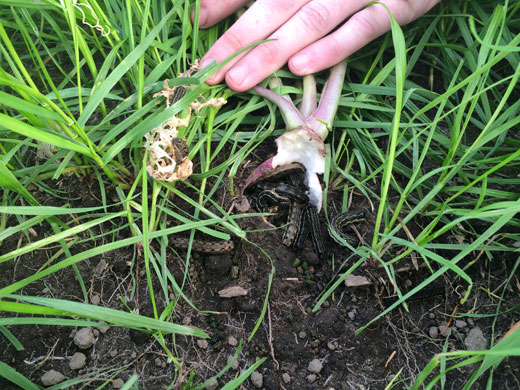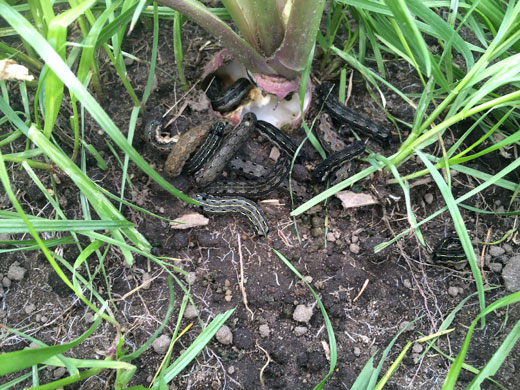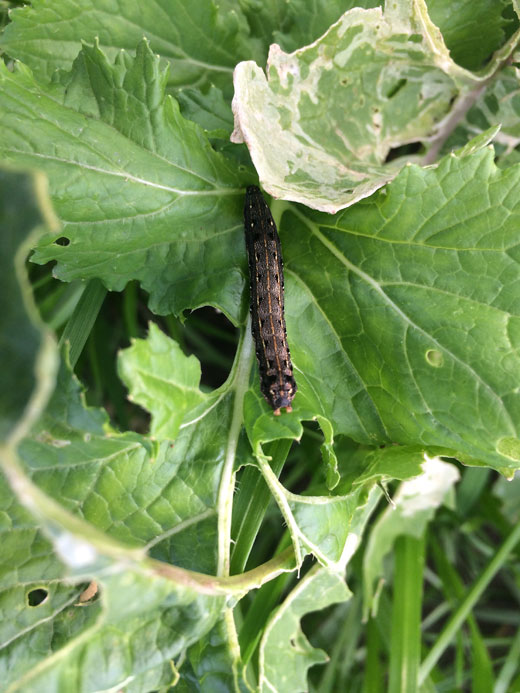Bay of Plenty farmers are being warned of a sighting of army worm caterpillars in Welcome Bay this week, which may put at risk supplementary winter feed supplies for livestock.
Bill Webb of Bill Webb Feed Solutions discovered army worm caterpillars in a paddock of turnips near Welcome Bay on Tuesday morning, which he believes could threaten other crops.
Army worm caterpillars have been discovered in a turnip crop near Welcome Bay.
The sighting comes as the last serious outbreak – which are rare – caused widespread damage in autumn 2011, following an earlier outbreak in autumn 1975.
'Farmers need to be aware that there appears to be an increase in numbers of these pests, because they can do significant damage to crops,” says Bill, who says hundreds of caterpillars are munching their way through the turnip crop.
He is now applying insecticide to the crop, to control the insects.
'We had a similar problem in 2011, when the caterpillars appeared to come from nowhere to eat crops.
'It could be that the mild winter we had last year; and the summer weather contributing to their increase again.”

Army worm caterpillars, discovered at|Welcome Bay on Tuesday.
All new pastures can be at risk from the caterpillars – and given the right conditions there can be a population explosion, says Bill.
AgResearch advises insecticides, applied at first sign of caterpillars and damage, remain the most effective way to control tropical armyworm.
However, cooler winter temperatures should reduce numbers. Farmers should consult their pesticide representatives for advice on what sprays are best to use.
The name armyworm comes from the way the caterpillars ‘march' across a field in formation, eating all suitable plant material in their path. Colours vary and caterpillars grow up to 50mm long.
During summer eggs hatch within a week and the caterpillars take about three-four weeks to fully develop. The pupal stage lasts about two weeks and the female moth begins laying eggs about four days after it emerges from the pupa.
Several generations occur during spring-autumn, depending on the average temperature; the exact number is not known.
There are two types of caterpillar which can cause this kind of crop damage; tropical armyworm (Spodoptera litura) and cosmopolitan armyworm (Mythimna separata).
Tropical armyworm is widely distributed through Asia and the Pacific regions.
Cosmopolitan armyworm is found in warmer parts of the North Island, causing sporadic damage in Northland, Waikato, Bay of Plenty, Taranaki and Manawatu regions.

Army worm caterpillars present threat to livestock feed.

Army worm caterpillars.



0 comments
Leave a Comment
You must be logged in to make a comment.